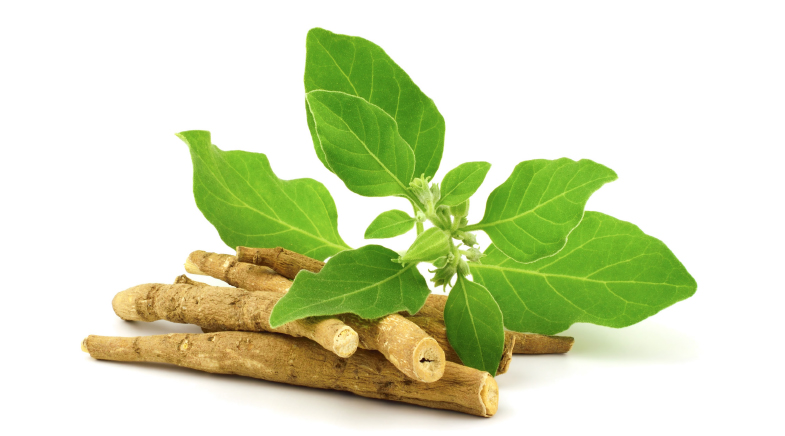Harnessing the herb
-
- from Shaastra :: vol 03 issue 03 :: Apr 2024

Scientists have known the medicinal properties of ashwagandha for several decades. Now the evidence is getting stronger.
It is not spectacular to look at. It doesn't smell great either, unless one likes the smell of stables. Named after its horsey scent, ashwagandha (Withania somnifera) is a herb that grows in Asia and is popular in traditional medicine systems – being used to treat several conditions and found in over 200 formulations across these systems, including Ayurveda, Unani, Siddha and Traditional Chinese Medicine. For the past five decades, scientists have been interested, too.
Scientific interest in ashwagandha has picked up so much recently that the National Center for Complementary and Integrative Health of the U.S. National Institutes of Health lists the herb as a "high-priority subject for human…studies", showing promise in a wide variety of serious diseases, including cancer.
Vikram Gota, Professor of Clinical Pharmacology at the Tata Memorial Centre Advanced Centre for Treatment, Research & Education in Cancer (ACTREC) in Navi Mumbai, who works on clinical applications of the ancient medicinal plant, is in the process of developing a drug that could help in the treatment of cancer patients. He has initiated one set of human trials, and hopes to begin another soon.
SCREENING FOR PHYTOCHEMICALS
The herb entered Gota's lab in 2016 through the process of screening and elimination carried out regularly by his institute. The process involves screening molecules, such as plant derivatives, for their anti-inflammatory, anti-cancer, immunomodulatory and radio-protective properties. Gota chose an ashwagandha-derived molecule for its immunomodulatory effects.
"We decided to address the problem of GvHD, which, because of its small (number) of patients, does not attract researchers to develop newer drugs for it," Gota says. Graft-versus-Host Disease or GvHD is a condition in which the graft (or donor) cells attack the body of a patient whose immune system was compromised prior to receiving the transplant. GvHD is a leading cause of death in transplant recipients and shows symptoms as varied as fatigue, mouth ulcers, diarrhoea, desquamation of skin and liver failure.
Gota's team treated donor graft cells with Withaferin-A – a steroidal molecule obtained from ashwagandha – before injecting them into mice. The treatment reduced morbidity from transplantation. The study, published in 2020, showed that the compound inhibits early events in the T-cell activation pathway, thus lowering the chances of GvHD (bit.ly/T-cell).
As treating donor cells runs the risk of contamination, it is not a recommended treatment. So, next researchers wanted to test if the molecule provided the same protection when administered orally in mice. Gota and team found that Withaferin-A inhibited a GvHD-induced cytokine storm, prevented GvHD-induced weight loss and improved survival. Additionally, their research established that a low, 1 mg/kg/day dosage, worked better than higher doses, allaying fears associated with a higher dose (bit.ly/Withaferin-A).
The first clinical trial is meant to establish whether administering ashwagandha to transplant patients can treat GvHD.
Gota's research indicates that ashwagandha could help prevent and treat GvHD in patients who have received a bone marrow or stem cell transplant as cancer treatment.
Following toxicology studies in animal models (bit.ly/toxicology-mice) and in humans (bit.ly/toxicology-humans), Gota's lab has now got approvals for human trials of the GvHD treatment. (In the human Phase I trial, Withaferin-A was found to be safe in dosages of up to 216 mg/day; the study used Withaferin extract with 4.5% Withaferin-A to show that the nutraceutical would have the same effect as the molecule, and adjusted the dosage accordingly.)
The first clinical trial, for which Gota is recruiting patients, is meant to establish whether administering ashwagandha to transplant patients can treat GvHD cases which are unresponsive to corticosteroid treatment. The established treatment in such cases is with ruxolitinib, which costs around ₹1.5 lakh for a month's treatment. The researchers are using a previously approved nutraceutical extract of Withania somnifera, instead of waiting to get Withaferin-A cleared by the regulatory authorities (the process is time-consuming).
The second clinical trial will investigate if the herb is effective in preventing GvHD among transplant patients. "Ashwagandha could provide a therapeutic option which may change the transplant landscape of the country," says Gota.

FROM ANCIENT TO MODERN
At Lucknow's CSIR-Central Drug Research Institute, Srikanta Rath and team are developing an ashwagandha-based phytopharmaceutical for treating patients of ischaemic stroke. During a stroke, a blood clot in the brain cuts off oxygen supply to the surrounding tissue. Rath's experiments show that a purified extract of the root of Withania somnifera, when consumed orally, offers a protective shield to neurons, thus minimising the damage caused by strokes (bit.ly/neuro-rats). The study, which was conducted in rats, showed around 80% reduction in nerve damage post-treatment. It also showed that pre-treated rats had less nerve damage when a stroke was induced. It is now undergoing safety assessments in rabbits.
Rath's association with the herb goes back to 2011 when he was part of a multi-institute initiative to scientifically validate various therapeutic uses mentioned in ancient literature. Phytopharmaceutical drug development was not the objective then.
In 2015, the Central Drugs Standard Control Organisation had put forth new processes for developing phytopharmaceuticals, making it mandatory to identify at least four markers, and to establish standardised formulations. The team, which was earlier working with Withania extract, re-conducted the experiments in collaboration with CSIR-CIMAP, with a further purified fraction. It identified Withanoside IV & V, Withanolide A, and 12-Deoxywithastramonolide as bio/chemical markers for the Withania somnifera standardised fraction.
The research team is working on demonstrating that the formulation will have stability for at least two years to make a marketable product. At present, the team has demonstrated a stability of six months of its phytopharma active pharmaceutical ingredient. It is also examining whether this medication will work as an adjunct with other clot-busters like clopidogrel, used to treat strokes. "We are hopeful of starting clinical trials by the year-end," says Rath.
The herb's potential in integrative oncology has garnered much interest among researchers globally.
There are other studies in India exploring the possibilities with the herb's immunomodulatory properties. Ongoing research by Savitribai Phule Pune University, Institute of Teaching and Research in Ayurveda in Jamnagar, and National AIDS Research Institute in Pune, is inquiring how ashwagandha extract could be a potential source of multi-target active drugs against infection.
"Applying modern principles of scientific investigation to traditional knowledge helps explain the working mechanism of these formulations on the one hand. On the other, we discover new uses for these ancient medicines," says Girish Tillu, principal investigator of the study and Assistant Professor at Savitribai Phule Pune University's Interdisciplinary School of Health Science.
Bhushan Patwardhan, National Research Professor, Ministry of AYUSH, and Former Director of the School, has led several investigations on the uses of ashwagandha. A multi-centric study from Patwardhan's lab that is yet to be published explores the pairing of ashwagandha extract with Covishield vaccine for enhanced immunity. Many such studies are in line to establish herb-drug interaction for integrated disease management. For establishing treatment protocols, the interactions between the phytopharmaceutical and any drugs that they are being paired with need to be studied.
Among its various properties, the herb's potential in integrative oncology has garnered much interest among researchers globally, with various investigations exploring the cellular level mechanisms of its action. One clinical trial on 50 breast cancer patients in Malaysia suggested that administering the herbal drug along with chemotherapy reduced fatigue and improved the quality of life (bit.ly/herb-chemotherapy). An Australian research group has investigated its action on melanoma cells (go.nature.com/3T8aI85) while another from the U.S., led by R. C. Gupta, who has done extensive research on botanicals, indicates the potential of Withaferin-A in helping prevent metastasis in certain lung and other cancers (bit.ly/WA-cancer).
Don't judge a plant by its smell.
See also:
Have a
story idea?
Tell us.
Do you have a recent research paper or an idea for a science/technology-themed article that you'd like to tell us about?
GET IN TOUCH














